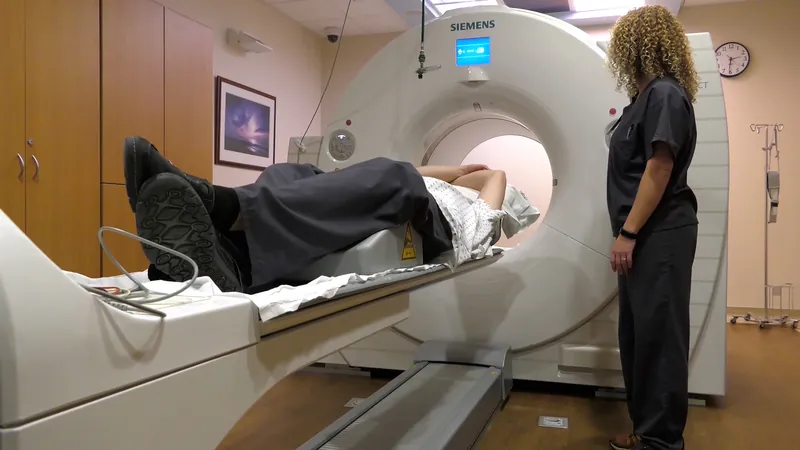
How Tech Can Extend Work Life for People with Dementia
2025-04-02
Author: Emily
In a world where the older workforce is becoming increasingly prevalent, many individuals facing dementia wish to remain active in their jobs longer. Take the case of Paul, a finance administrator overwhelmed by a grave mistake in a report where he accidentally recorded costs of £7,000,000 instead of £700,000. Faced with a fear of being accused of fraud, Paul decided to disclose his dementia diagnosis to his supervisor. What unfolded was a downward spiral, leading to six months of sick leave and ultimately an early, reluctant retirement that Paul now reflects on with regret.
His experience is not unique; with the global population ageing and dementia cases rising—approximately 9% of the 55 million worldwide with dementia are under 65, translating to around 370,000 new young-onset dementia diagnoses each year—it’s becoming crucial to examine how workplaces accommodate this demographic.
Currently, while governments and businesses advocate for longer working lives and inclusive practices, individuals with dementia often slip through the cracks, with many experiencing unwanted unemployment. This can manifest as forced redundancy or a gradual shift from temporary leave to permanent exit, as seen in Paul's situation.
On the brighter side, digital transformation is redefining modern industries, and it presents an untapped opportunity to support workers with dementia. Contrary to the stereotypes that paint older individuals as technophobes, many people living with dementia today have significant digital literacy, having engaged with various technologies throughout their lives. They may have been bloggers in their 30s and social media users in their 40s, before their cognitive challenges emerged.
The good news is that numerous digital tools already exist that can empower people with dementia to maintain a fulfilling work life. Tools such as voice-activated AI companions not only provide vital support for social interaction but can also assist in managing work-related tasks. For example, calendar automation can help remind employees of appointments, while navigation apps can assist those struggling with wayfinding in complex environments.
While traditional interfaces can be unyielding for those with cognitive impairments, the latest innovations can adapt to meet their needs. The integration of voice-operated assistants into workstations could overhaul the way tasks are completed, making a significant difference for employees struggling with memory or communication challenges.
Moreover, generative AI tools—which are capable of predicting text sequences—hold the potential to aid dementia sufferers in drafting messages or producing documents in clearer formats. Such AI tools could simplify communication by transforming complex text into more digestible formats with larger fonts and simpler sentences.
In an era where manual data entry is prone to errors—regardless of cognitive ability—leveraging technology can enable an aging workforce to focus on their strengths, such as mentoring and knowledge-sharing, rather than administrative tasks.
Moving forward, it is incumbent upon employers to foster an environment where individuals with dementia can thrive. This involves developing tailored strategies, possibly modelled after existing accommodations for other disabilities, so that when employees are diagnosed, they can choose the appropriate tools to support their work needs.
Currently, very few workplaces have robust strategies for supporting staff with dementia. However, organizations like the University of Bath are setting a precedent with already established reasonable adjustments for mental illness.
With the UK government focusing on increasing the number of disabled individuals in the labor market while also promoting AI integration, it’s clear that significant potential exists for creating a supportive work environment for people with dementia. Yet, it is essential to strike a balance—merely pushing employees to remain in the workforce without proper support risks exacerbating their challenges. Instead, customized support can enrich both the lives of workers and the organizations they contribute to.
This creates a compelling vision for the future: a vibrant workplace where the wisdom and experience of employees with dementia can continue to shine, supported by the very technologies designed to help them.









 Brasil (PT)
Brasil (PT)
 Canada (EN)
Canada (EN)
 Chile (ES)
Chile (ES)
 Česko (CS)
Česko (CS)
 대한민국 (KO)
대한민국 (KO)
 España (ES)
España (ES)
 France (FR)
France (FR)
 Hong Kong (EN)
Hong Kong (EN)
 Italia (IT)
Italia (IT)
 日本 (JA)
日本 (JA)
 Magyarország (HU)
Magyarország (HU)
 Norge (NO)
Norge (NO)
 Polska (PL)
Polska (PL)
 Schweiz (DE)
Schweiz (DE)
 Singapore (EN)
Singapore (EN)
 Sverige (SV)
Sverige (SV)
 Suomi (FI)
Suomi (FI)
 Türkiye (TR)
Türkiye (TR)
 الإمارات العربية المتحدة (AR)
الإمارات العربية المتحدة (AR)